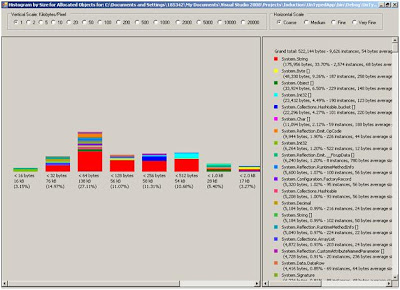We can achieve this using Ajax also but here I am discussing how we can achieve without using Ajax.
1. Add a page in the project with name “MyPage.aspx”, copy and paste below code in the aspx page
<%@ Page Language="C#" AutoEventWireup="true" CodeFile="MyPage.aspx.cs" Inherits="MyPage" %>
<!DOCTYPE html PUBLIC "-//W3C//DTD XHTML 1.0 Transitional//EN" "http://www.w3.org/TR/xhtml1/DTD/xhtml1-transitional.dtd">
<html xmlns="http://www.w3.org/1999/xhtml">
<head runat="server">
<title>Refresh part of page</title>
<meta http-equiv="Refresh" content="5" />
</head>
<body>
<form id="form1" runat="server">
<div>
<asp:Label ID="Label1" runat="server" Text="Label"></asp:Label>
</div>
</form>
</body>
</html>
The below line of code in the head section of the above code will refresh the page after every 5 second.
<meta http-equiv="Refresh" content="5" />
I have placed a Label on the page which will show the time on the page on each refresh of the page.
Put below bold and italic lines of code in the Page_Load method of MyPage.aspx page, this line will refresh the time on each refresh of the page.
protected void Page_Load(object sender, EventArgs e)
{
Label1.Text = "This Page has been refrested at " + DateTime.Now.ToString();
}
2. Now add another page in the project with name “Refresh.aspx”, copy and paste below code in aspx page of Refresh.aspx.
<%@ Page Language="C#" AutoEventWireup="true" CodeFile="Refresh.aspx.cs" Inherits="Refresh" %>
<!DOCTYPE html PUBLIC "-//W3C//DTD XHTML 1.0 Transitional//EN" "http://www.w3.org/TR/xhtml1/DTD/xhtml1-transitional.dtd">
<html xmlns="http://www.w3.org/1999/xhtml">
<head runat="server">
<title>Untitled Page</title>
</head>
<body onload="refreshiFrame();">
<form id="form1" runat="server">
<asp:Label ID="Label1" runat="server" Text="" />
<div>
<iframe id = "myFrame" src = "MyPage.aspx" frameborder = "0" style="width: 500px;height: 100px">
</iframe>
</div>
</form>
</body>
</html>
I have added an IFrame to achieve the goal of part refresh of the page. I have added src property and set it to MyPage.aspx. I have created MyPage.aspx in the first page.
I have also put a label outside the iframe, it will show the Date and time when Refresh.aspx page will load.
Copy and paste below bold line of code on Page_Load method
protected void Page_Load(object sender, EventArgs e)
{
Label1.Text = DateTime.Now.ToString();
}
Now run Refresh.aspx page, you will notice that the time on the Refresh.aspx won’t change but the time on MyPage.aspx will change after every 5 seconds
Happy Coding :)









